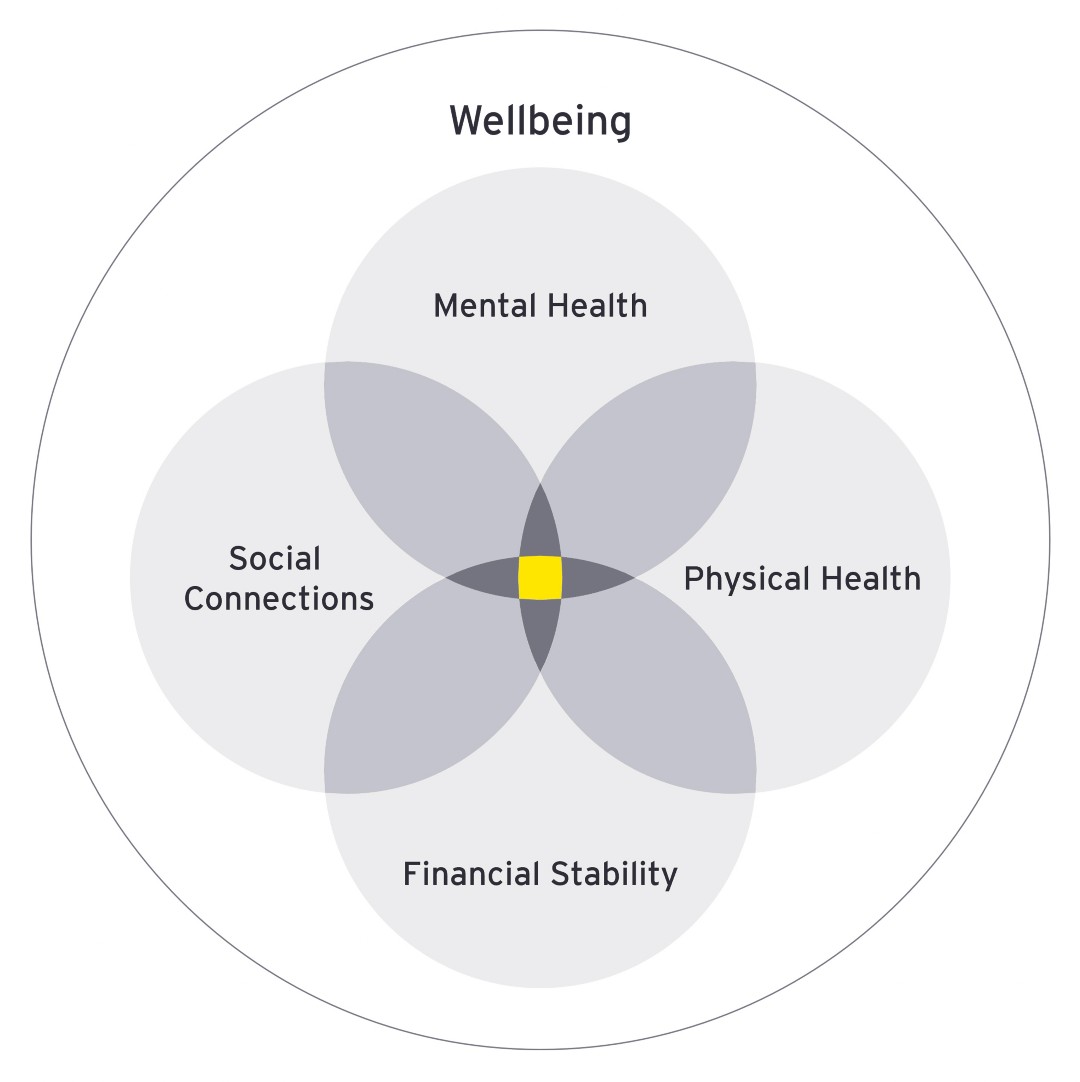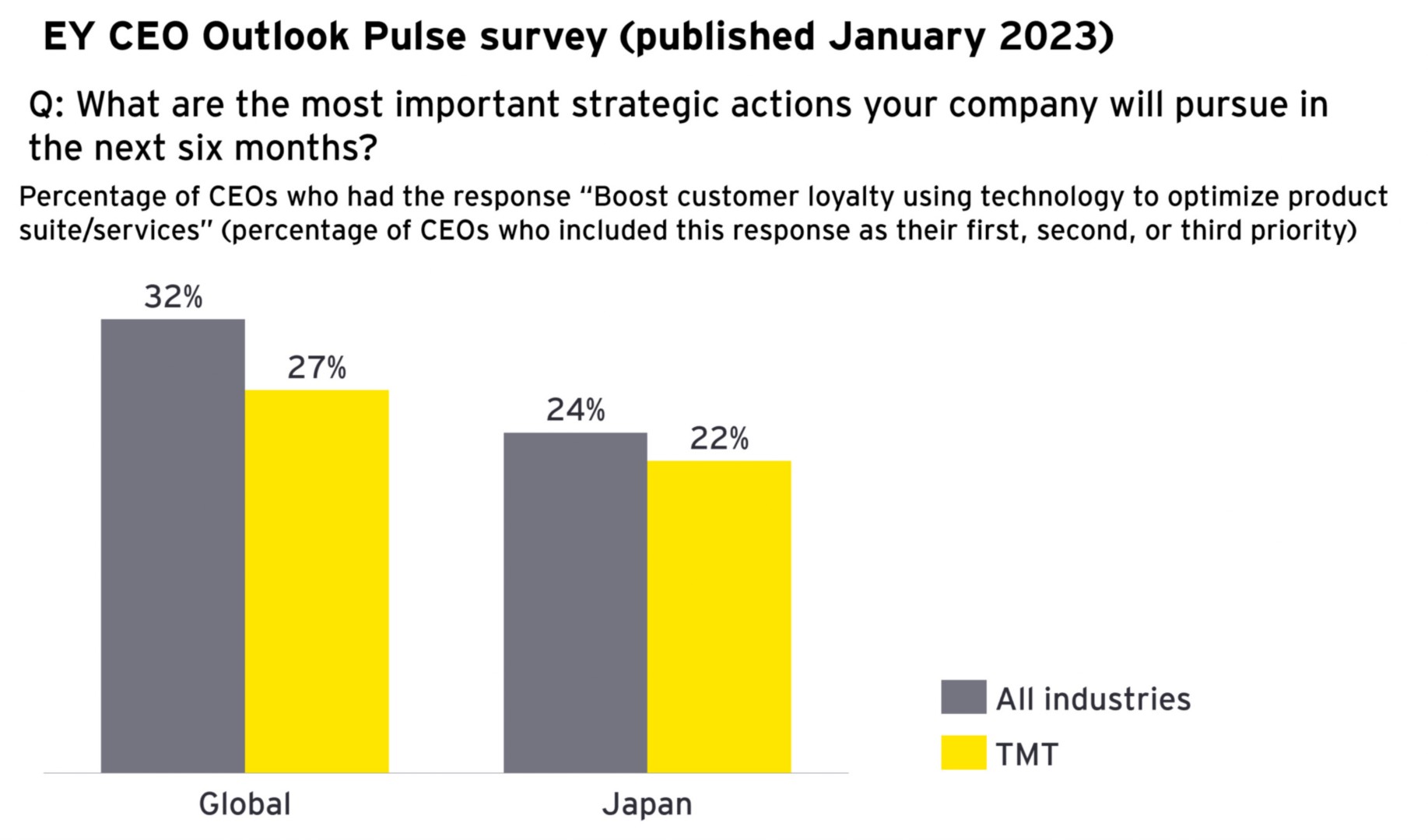The use of technology is important in promoting the development of more effective and easy-to-use well-being technology, and such developments support its users to build a healthy lifestyle. Against the backdrop of today’s society where the attention economy prevails, companies must utilize technology that appears invisible to customers. They should strive for a business model and strategy which continues to attract rather than repel customers. This is how companies can utilize technology to ultimately enhance customer loyalty and optimize their products and services.
When asked about well-being technology, Takashi Maeno, President of the Society of Well-being (a Japanese academic society) and professor at Keio University's Graduate School of System Design and Management, offered that “people who are happy are typically in a good place in terms of social capital and in favorable personal relationships, are highly motivated and full of positive energy, and can decide to take on new challenges and express their individuality. Well-being technology should serve to enable people to leverage their sensibilities, and pave the way for personal relationships and motivation.”
A hyper-aging society supported by well-being technology
Japan, China, and other developed countries are experiencing a particularly high level of aging in society. Given that a hyper-aging society entails a wide range of issues relating to nursing, a labor shortage and increased loneliness, well-being technology is expected to help confront these issues.
1. Maintaining and improving health: Well-being technology can be used in wearable devices and mobile apps to collect health-related information, help monitor health conditions and detect illness at an early stage. Personalized health advice and rehabilitation programs that utilize AI will also emerge, and will play a major role in maintaining and improving the health of elderly people.
2. Reducing the burden of elder care: We are currently seeing advances in elder care support that utilize robot technology and AI. From physical assistance to memory support and functioning as conversation partners, it enhances the quality of care across various aspects, thereby alleviating the burden on human caregivers.
3. More effective medical and nursing services: Medical and nursing services will become more accessible and usable through telehealth, online examinations, and remote monitoring services for elderly people who live in remote areas. These technologies will also play a pivotal role in bridging the medical and nursing gap between cities and remote areas.
4. Encouraging social participation and alleviating loneliness: Digital devices and social media will provide elderly people with opportunities to participate in the community and stay connected to others. Preventing social isolation and participating in the community is essential for maintaining mental health.
5. Resolving a labor shortage: Technology will support working environments where elderly people can thrive. The option of working online or remotely provides elderly people with an environment to continue working, while platforms for work training and re-learning also assist in updating their skillset.
Professor Maeno, also describes the benefits of well-being technology as “it’s overall ability to extend healthy life expectancy and motivate people in their lives, and contribute to life’s ultimate objective - happiness.”
At the same time, we have also discovered that using well-being technology in a hyper-aging society brings its own challenges.
1. Digital literacy: The majority of elderly people currently lack the knowledge and skills to use digital devices. Gaining an understanding of new technology can also be difficult and represent a barrier for them to integrate new technology into their lives. As an example, when using applications that monitor health conditions on smartphones or tablets, navigating the app or understanding the displayed information can be difficult. Simple and easy-to-use user interfaces tailored to elderly people and education programs to enhance digital literacy are essential to address this situation. Takeshi Ando of Panasonic, has stated that elderly people have a need for “easy-to-use well-being technology which does not make the user aware of the fact that they are using it.”
2. Privacy and data security: There is concern for how health-related information and other personal data is managed and used. Elderly people can be less aware of security concerns, which introduces the risk of information leakage. Among all types of personal data, health-related information is particularly personal and sensitive, and must be handled with great care.
3. Absence of appropriate support and guidelines: The use of technology requires continuous support but there may be cases where it falls short. Setting up devices and troubleshooting are typical scenarios requiring support. We must also keep in mind that insufficient equipment and systems in medical institutions and nursing facilities, and a lack of guidelines and regulations governing digitalization, are issues that are yet to be resolved. Additionally, while well-being technology should be based on scientific evidence, there may be products that directly contradict this fundamental principal and are promoted with pseudoscience. These products can provide misleading information to users and affect their ability to make informed decisions.
In order to overcome these issues and leverage well-being technology to its utmost, it is important for companies to engage in initiatives to understand user needs and problems, establish extensive education and support systems, ensure data privacy and security, disseminate technology, and to enhance accessibility.





